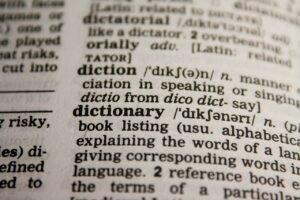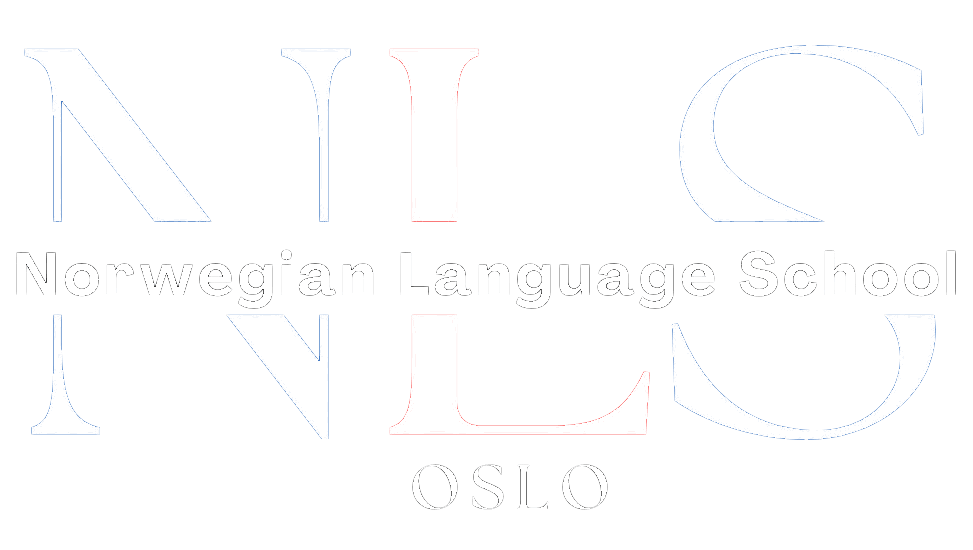

Norwegian Etiquette: Polite Phrases and Cultural Norms
Norway, renowned for its stunning natural landscapes, rich history, and high quality of life, is also a country deeply rooted in cultural traditions and social etiquette. Understanding and respecting these customs is essential for anyone planning to visit or live in Norway. This comprehensive guide will delve into various aspects of Norwegian etiquette, providing you with the necessary tools to navigate social interactions smoothly.
Table of Contents
ToggleGreetings and Polite Expressions
In Norway, greetings are typically formal and understated, reflecting the country’s overall reserved nature. A firm handshake, direct eye contact, and a smile are standard when meeting someone for the first time. In social contexts, it’s common to use first names, but in more formal or business settings, addressing someone with their title and last name shows respect.
- Hei! (Hi!) – A casual greeting used among friends and acquaintances.
- God morgen! (Good morning!) – Used until around noon.
- God kveld! (Good evening!) – Used in the later part of the day.
- Hvordan har du det? (How are you?) – A polite inquiry about someone’s well-being.
- Hyggelig å møte deg. (Nice to meet you.) – Used when meeting someone for the first time.
When addressing people in formal situations, especially in a business context or when meeting someone older, using titles is appreciated:
- Herr Hansen (Mr. Hansen)
- Fru Johansen (Mrs. Johansen)
Respect for Personal Space and Privacy
Norwegians place a high value on personal space and privacy. It’s customary to maintain a respectful distance from others in public and private settings. Unlike some cultures where physical closeness is common, Norwegians prefer a more reserved approach. For example, hugging is typically reserved for close friends and family, and it’s important to avoid standing too close to someone in line or on public transport.
- Unnskyld, kan jeg få passere? (Excuse me, may I pass?) – Used to politely navigate through crowded spaces.
- Kan jeg få litt plass, vær så snill? (Can I have some space, please?) – A gentle request to maintain personal space.
Punctuality
Punctuality is a cornerstone of Norwegian etiquette. Being on time is not just a matter of politeness but a sign of respect and reliability. Whether it’s for a business meeting, a doctor’s appointment, or a social event, punctuality is expected. Arriving late, even by a few minutes, is generally frowned upon and may be seen as disrespectful.
- Takk for at du ventet. (Thank you for waiting.) – Acknowledging someone’s patience.
- Beklager at jeg er sen. (Sorry for being late.) – Apologizing for tardiness.
- Vi sees klokken tre. (See you at three o’clock.) – Confirming an appointment time.
Dining Etiquette
Dining etiquette in Norway is reflective of the country’s egalitarian values and straightforward nature. When invited to a Norwegian home for a meal, it is customary to bring a small gift, such as flowers, wine, or chocolates. The meal usually starts with everyone being seated and the host initiating the eating. Table manners are simple: keep your hands visible but not resting on the table, and try to finish everything on your plate as a sign of appreciation for the meal.
- Tusen takk for maten. (Thank you very much for the food.) – Expressing gratitude after a meal.
- Kan du sende meg saltet, vær så snill? (Can you pass me the salt, please?) – Requesting an item during the meal.
- Maten smaker fantastisk! (The food tastes fantastic!) – Complimenting the cook.
Gift-Giving
Gift-giving is a thoughtful gesture in Norwegian culture, especially when invited to someone’s home. Suitable gifts include flowers (avoid even numbers, as they are traditionally associated with funerals), wine, or chocolates. When presenting the gift, it is polite to do so with both hands and express your gratitude verbally.
- Dette er til deg. (This is for you.) – Presenting a gift.
- Takk for invitasjonen. (Thank you for the invitation.) – Expressing gratitude for being invited.
- Håper du liker det. (Hope you like it.) – A hopeful sentiment when giving a gift.
Small Talk and Conversation
Norwegians are generally reserved and value straightforwardness in conversations. Small talk is usually brief and to the point, with topics like nature, sports, and travel being safe and enjoyable subjects. Personal topics such as income, politics, and religion are usually avoided unless you know the person well. Being a good listener and showing genuine interest are key components of a successful conversation in Norway.
- For en vakker dag! (What a beautiful day!) – Commenting on the weather, a common small talk topic.
- Liker du å reise? (Do you like to travel?) – A safe conversation starter.
- Har du noen hobbyer? (Do you have any hobbies?) – Asking about interests.
- Fortell meg om turen din. (Tell me about your trip.) – Showing interest in someone’s experiences.
Cultural Norms
Norwegians have a profound respect for nature and the environment, which is evident in their daily lives and cultural practices. The concept of “friluftsliv,” meaning “open-air living,” is central to Norwegian culture. It reflects a deep appreciation for outdoor activities and the natural beauty of the country. Environmental consciousness is also a significant aspect of Norwegian life, with a strong emphasis on sustainability and eco-friendly practices.
- Friluftsliv (Open-air living) – A lifestyle that emphasizes outdoor activities and nature.
- Miljøvennlig (Environmentally friendly) – Practices that are kind to the environment.
- Resirkulering (Recycling) – The practice of reprocessing materials to reduce waste.
Formal and Informal Contexts
Understanding the distinction between formal and informal contexts is crucial in Norway. In formal settings, such as business meetings or official events, dressing smartly and adhering to protocols is important. Formal attire typically includes suits for men and professional dresses or suits for women. In informal settings, casual attire is acceptable, but politeness and respect remain constants.
- Skal vi møtes på kontoret? (Shall we meet at the office?) – A formal meeting arrangement.
- Vil du bli med på en tur? (Would you like to join for a hike?) – An informal invitation.
Apologies and Gratitude
Expressing apologies and gratitude is a significant part of Norwegian etiquette. When you make a mistake or cause an inconvenience, offering a sincere apology is expected. Similarly, thanking people for their help, services, or hospitality is common courtesy. Gratitude can be shown both verbally and through gestures, such as a thank-you note or a small gift.
- Unnskyld, det var ikke meningen. (Sorry, it was not intentional.) – Offering a sincere apology.
- Tusen takk for hjelpen. (Thank you very much for your help.) – Expressing deep gratitude.
- Jeg setter pris på det. (I appreciate it.) – Acknowledging someone’s efforts.
Vocabulary List
- Hei! – Hi!
- God morgen! – Good morning!
- God kveld! – Good evening!
- Hvordan har du det? – How are you?
- Hyggelig å møte deg. – Nice to meet you.
- Unnskyld, kan jeg få passere? – Excuse me, may I pass?
- Kan jeg få litt plass, vær så snill? – Can I have some space, please?
- Takk for at du ventet. – Thank you for waiting.
- Beklager at jeg er sen. – Sorry for being late.
- Vi sees klokken tre. – See you at three o’clock.
- Tusen takk for maten. – Thank you very much for the food.
- Kan du sende meg saltet, vær så snill? – Can you pass me the salt, please?
- Maten smaker fantastisk! – The food tastes fantastic!
- Dette er til deg. – This is for you.
- Takk for invitasjonen. – Thank you for the invitation.
- Håper du liker det. – Hope you like it.
- For en vakker dag! – What a beautiful day!
- Liker du å reise? – Do you like to travel?
- Har du noen hobbyer? – Do you have any hobbies?
- Fortell meg om turen din. – Tell me about your trip.
- Friluftsliv – Open-air living
- Miljøvennlig – Environmentally friendly
- Resirkulering – Recycling
- Skal vi møtes på kontoret? – Shall we meet at the office?
- Vil du bli med på en tur? – Would you like to join for a hike?
- Unnskyld, det var ikke meningen. – Sorry, it was not intentional.
- Tusen takk for hjelpen. – Thank you very much for your help.
- Jeg setter pris på det. – I appreciate it.
Understanding and respecting Norwegian etiquette will greatly enhance your interactions and experiences in Norway. By learning and using these polite phrases and adhering to cultural norms, you will show respect for the Norwegian way of life and build positive relationships with those you meet. Whether exploring the scenic beauty of the fjords, enjoying a meal with new friends, or engaging in business, these insights will help you navigate Norwegian culture with confidence and grace.

Norwegian A1-A2
Course Overview The Norwegian A1-A2 course is an online program focused on teaching essential Norwegian grammar and vocabulary. It includes a variety of materials and topics, with opportunities to interact with a Norwegian teacher entirely online. Curriculum Highlights The course covers key areas such as grammar and vocabulary and topics such as family, daily life, education, work, traditions, and leisure activities. Who Should Enroll? This course is perfect for beginners or those at the A1 or A2 levels who want to improve their Norwegian skills. What You Get Access to the full Norwegian A1-A2 course. A monthly 1-hour online conversation with a teacher. Many written and oral assignments. Comprehensive information on Norwegian grammar, Norwegian vocabulary and how to use them, important sentence structures, etc. Tips on additional resources to further enhance your Norwegian learning.
0 students enrolled
Last updated Dec 10th, 2024
If you want to learn Norwegian, you can register for classes here. We look forward to hearing from you and helping you become fluent in Norwegian.
Refer a friend and get $150. Join the program here






